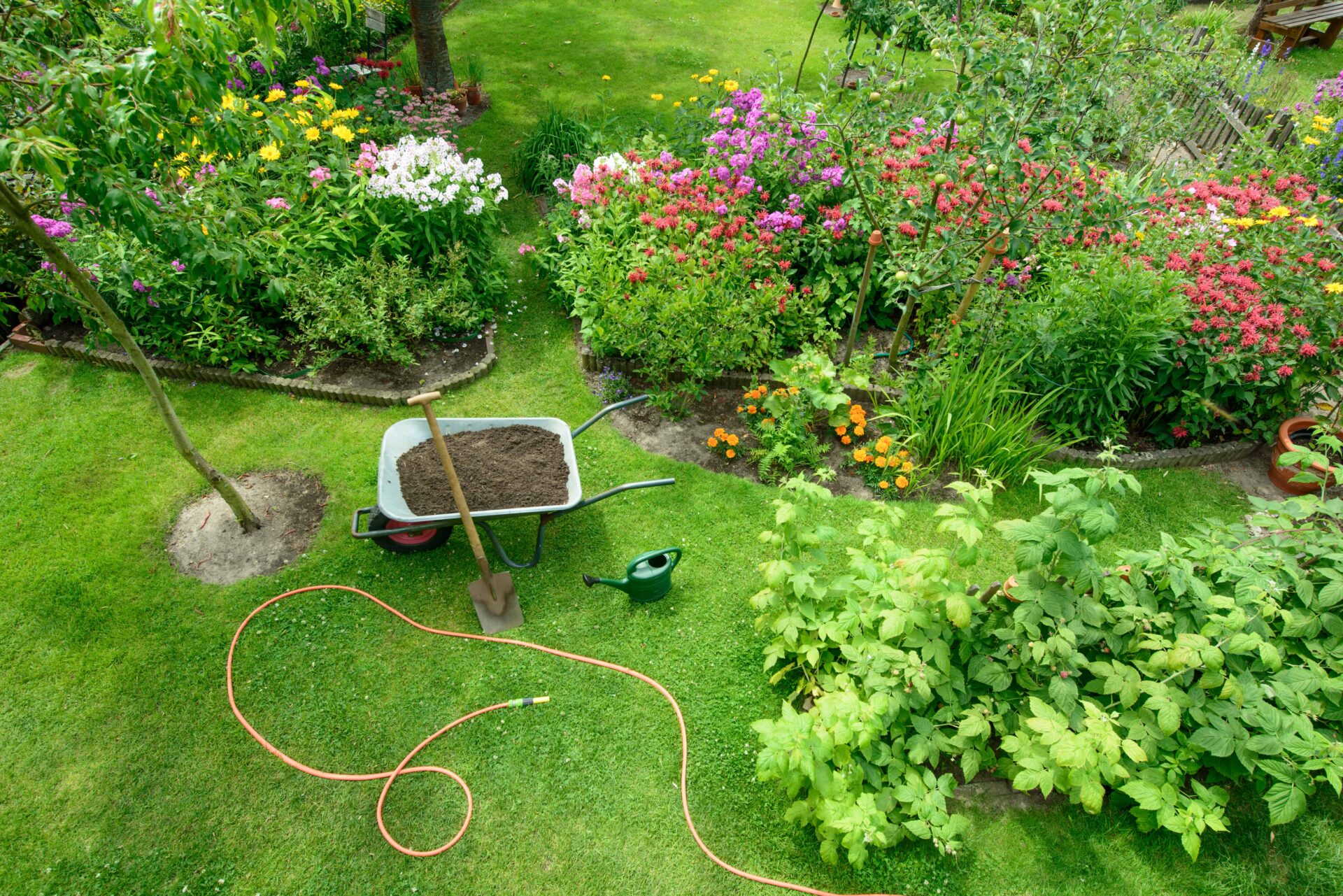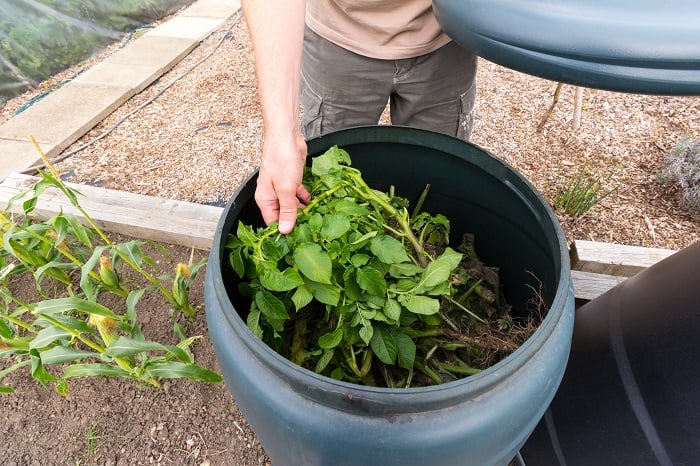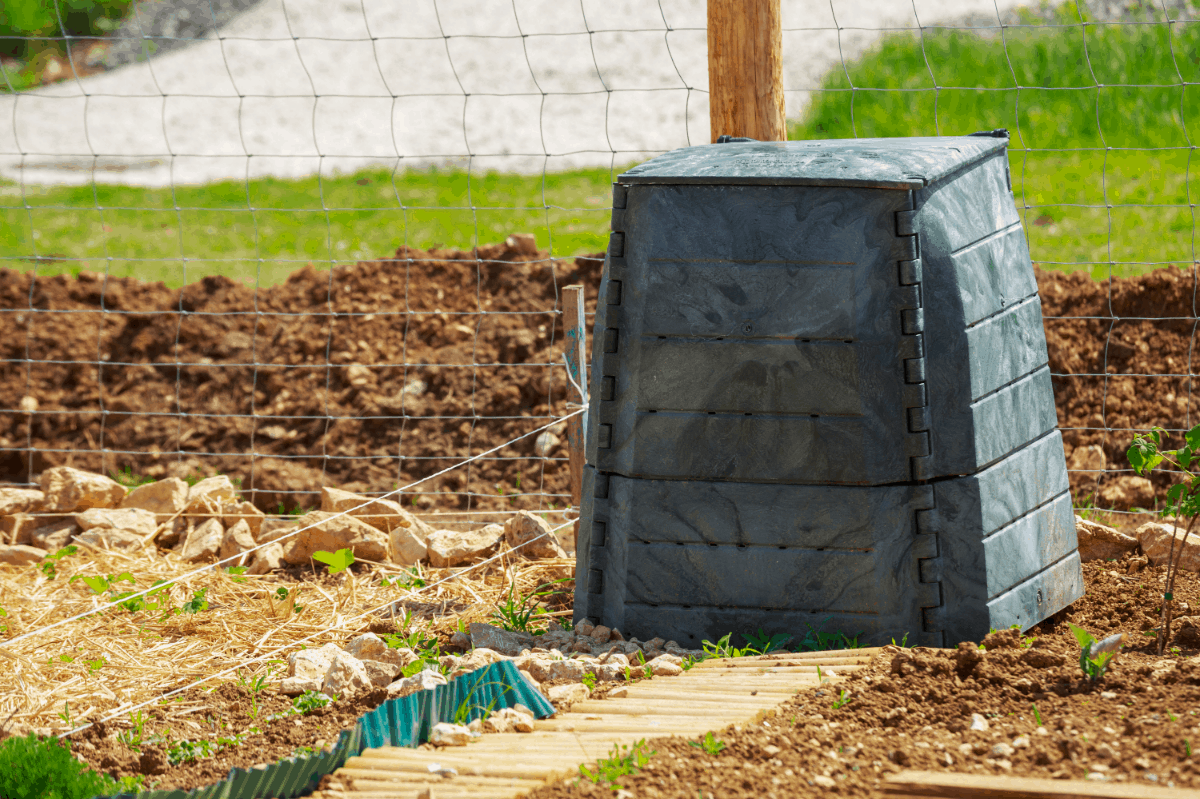Composting can be an effective way to make use of kitchen waste and yard scrap. If you do the proper composting procedures, it can also provide garden
You can either choose to start a compost pile or make use of a compost tumbler, it all depends on which one you prefer. While most gardeners are familiar with a compost pile, most will encounter some difficulties when starting a compost tumbler for the first time.
Fall into this category?
You can read up more about a compost tumbler and how to use one in the guide below.
What is a Compost Tumbler?
A compost tumbler is a sealed container that makes composting simpler and faster. It helps to retain the heat needed for decomposition and also turns the organic materials in the box.
Most times, the containers are made from recycled plastic and adequately sealed, unlike compost bins.
There are different types of compost tumblers, and they differ from one another based on their design. The sealed drum compost tumblers consist of few parts and are a much simpler model compared to the others. Some models have rollers on them, which makes it easy to move them around the garden.
Aerated drum compost tumblers are designed to provide the compost materials with all the oxygen required to speed up the process. You can also choose the dual-bin compost tumblers. Although they are more expensive, they produce compost faster than the others.
Starting a Compost Tumbler
The first thing you want to do once you decide on a starting a compost tumbler is to choose a suitable box for your garden. There are different types and designs of compost tumbler, so you want to look out for the one that best suits your garden.
-
Choose a Compost Tumbler
You can check your local garden supply shop or browse online for a compost tumbler. You want to do your research and find the best compost tumbler for your garden. Find one that suits your needs and falls within your budget.
-
Pick the Right Spot
Where you place your compost tumbler also determines how well it functions. You should set your compost tumbler in an area that is covered. It is best to reduce the amount of moisture that gets into the compost tumbler from outside. Place your bins under the tree or use a cover material to protect it from the elements.

-
Use the Right Type of Organic Materials
Composting requires kitchen or yard waste as raw organic materials, so you have to make sure that they are readily available for your compost tumbler.
You need to put in the right type of compostable materials into the compost tumbler, and it is the only way for microbial activity to take place. Kitchen waste such as eggshell and vegetable scraps are suitable compost materials. Still, you also need to ensure that your papers and other dense documents are of the right size before adding them to your tumblers.
-
Balance the Nitrogen and Carbon Materials
You will have to balance the nitrogen and carbon materials in the compost tumbler if you want decomposition to take place. Most gardeners get it right up until this spot; they don’t know how to choose the right brown and green materials for their compost pile.
You need to take note of all that you toss into the compost tumbler. It will be wrong to throw in anything that isn’t useful in the kitchen or around the home. The materials have to be rationed if you hope to get results soon enough. Ideally, the right mix should be a mixture of 75% brown materials and 25% green materials. Examples of brown carbon-rich materials include hay, sawdust, paper, and leaves. While green, nitrogen-rich materials provide a source of protein and include vegetable clippings, grass, coffee grounds, eggshell, and other kitchen scraps.
-
Remove Dirt and Debris for Your Compost Tumbler.
Just because composting looks messy doesn’t mean it is alright to throw anything into the collection. You want to avoid adding anything that can contaminate your composting efforts. Keep your compost pile free from any materials such as toxic chemicals and anything that isn’t safe for your

-
Compost in Batches for a Better Finished Compost
A compost tumbler might work magic when it comes to preparing compost, but you should know that this can take anywhere from a few weeks to a month to finish. So you want to ensure that you are patient enough and not tempted to add in new materials. Adding new elements to a compost pile that is already decaying will only increase the composting time.
If you intend to compost numerous materials, you can choose to buy a dual-bin compost tumbler or separate ones for your kitchen waste and yard scrap.
-
Practice Proper Composting Process
As a gardener, you need to know the right composting methods if you want to get the best from the process. The first thing you need to know is that after adding the materials into the compost tumbler, you may need to start the microbial activity on your own. While this can take place naturally, doing it will only speed up the composting process and time.
You can do this by adding in horse or cow manure and garden
You will also be required to turn compost tumbler as often as three times a week. Although, it is much easier to rotate a compost tumbler than a compost pile. All that is required is to hold the handle and spin the barrel continuously until you are satisfied; the materials are adequately mixed.
-
Monitor the Composting Process
You will need to check up on your compost regularly. You need to keep tabs on the temperature level, moisture content, and the color and consistency of your compost materials. While this may sound difficult, all you need is a few hours a week spread between two or three days to check with your compost.
FAQ’s
How do you make a compost tumbler?
You do want to make sure that turn your compost pile. It is easy enough to do manually, but if you have the time and energy, you can make a tumbler composting machine.
I’ve had good luck with this tumbler setup. It’s not as fast as a composter, but it’s more convenient and works just fine for me.
The procedure to make a tumbler composting machine is to first build a compost bin, and then assemble the tumbler.
Start with an empty plastic trash can (the larger the better). Fill it to the brim with your garden waste. The larger the better because the waste will be less compacted. Place your garden waste in the tumbler and cover it with a lid.
If you don’t have a lid, then use a plastic bag that is big enough to cover the tumbler. Check your compost every couple of days and turn it with a large spoon. I usually wait about a week before adding new ingredients to my compost bin. If you are using a metal tumbler, you may need to add some kind of binder to keep the waste from flying out of the container.
What size of compost bin should I use?
This really depends on what type of soil you have and how much garden waste you want to add. If you live in an area with sandy soil, then it’s best to go with a small bin. You’ll be able to use your bin more often and get more compost out of it. If you live in an area where you don’t have sandy soil, then go with a large bin.
How often should I rotate my compost tumbler?
Many composting experts recommend that you turn your compost tumbler at least twice a week. It’s important to remember that the material in your compost should be damp before turning. If it is dry, you will create heat and cause decomposition to be slower. If you have lots of green waste such as grass clippings or weeds, you may need to turn your compost more often.
Should I put my compost tumbler in the sun?
This is a good idea as it will make the decomposing process go faster, just remember that it will dry it out, so you do need to keep this under consideration.
What should you not put in a compost tumbler?
It’s true that some things, like meat and dairy products, should not be put into a tumbler. But it’s not always as simple as that as it really can come down to amounts that you put.
Other things that you shouldn’t put in a tumbler include, fats, wood that has been treated with pesticides, disease or infected plants, charchoal and pet waste.
Final Note
Starting a compost tumbler is not all that difficult, especially if you know a little bit about composting. For first time gardeners, you will need to pass through the learning curve to become expert compost farmers. You can mix finished compost to your
If you have a question or would like to contribute to the topic of starting a compost tumbler, feel free to do so in the comment section. We will love to hear from you.

Josephine is an enthusiastic gardener who loves to spend her spare time tending to her garden. She is passionate about growing her own food, and aspires to one day have her own vegetable garden. Josephine is also an animal lover and often takes in stray cats and dogs. She enjoys spending time with her pets in the garden, and is often seen playing with them or watering her plants. Josephine is an avid reader and enjoys learning about new gardening techniques and plants. She is always looking for ways to improve her garden and make it more beautiful. She is a great friend, always willing to lend a helping hand when needed. Josephine‘s passion for gardening and love of animals make her a wonderful addition to any garden.




